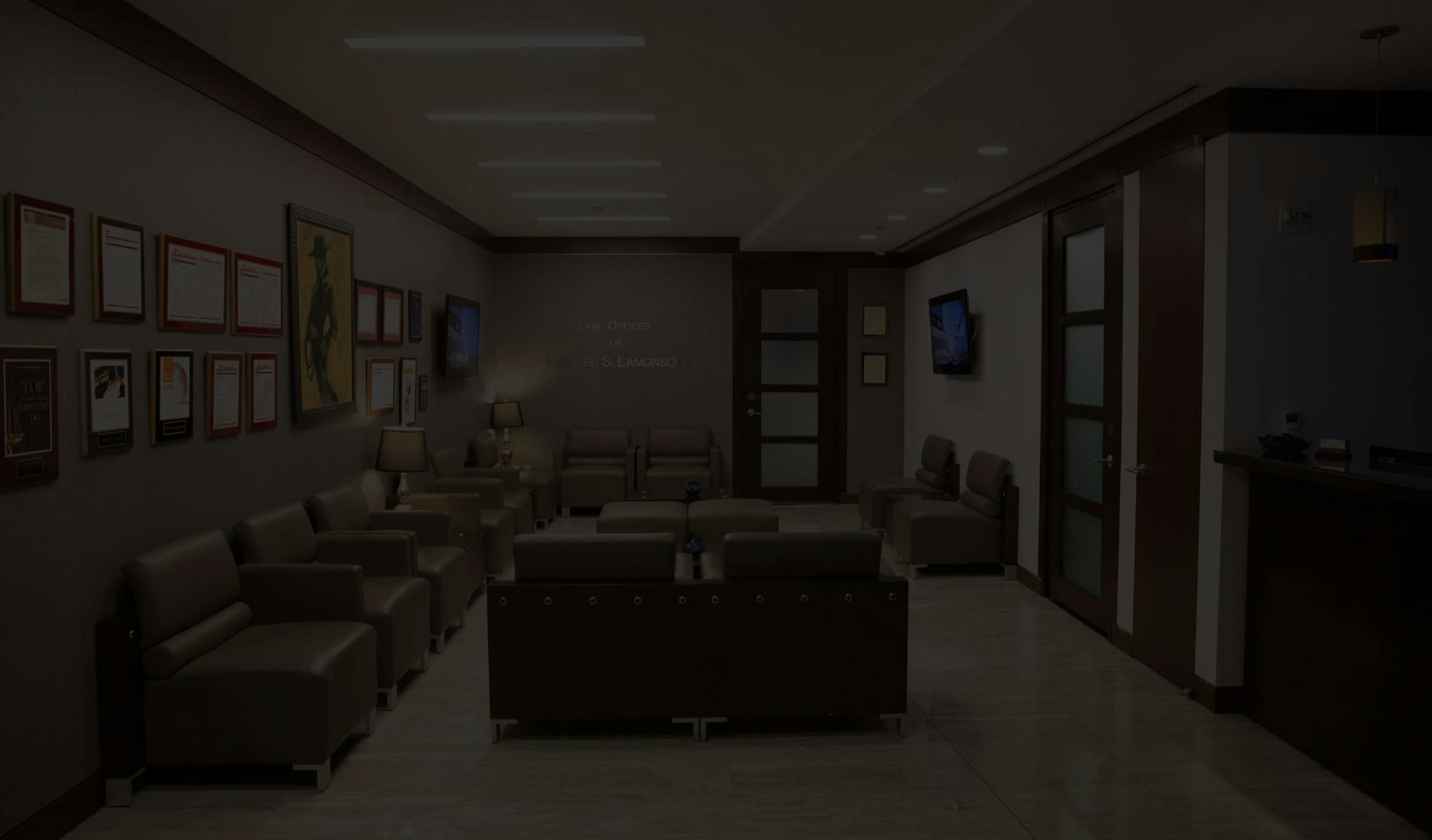Clients call Michael Lamonsoff “The Bull” because he fights relentlessly for their victory. We are consistently rated as one of the top personal injury law firms in New York City.
Escalator Accident Lawyer New York City

Negligence in Elevator and Escalator Maintenance
Commercial property owners in New York have a legal responsibility to maintain the safety of their premises, which includes elevators and escalators. Negligence on the part of owners or managers, such as the failure to conduct proper inspections, maintenance, or repairs, can result in them being held liable for any accidents that occur.
At the law firm of Michael S. Lamosoff, we have extensive experience advocating for individuals who have been involved in elevator or escalator accidents in New York City. Our dedicated attorneys are committed to pursuing and securing maximum compensation for our clients' injuries and damages. If you have been injured on an elevator or escalator, we invite you to reach out to one of our escalator accident lawyers in New York City for a complimentary case evaluation. We are here to help!
Causes of Escalator Accidents
Escalator accidents in New York can occur due to various causes, including:
- Mechanical failure: Malfunctions or defects in escalator components, such as the motor, drive system, braking system, or handrails, can lead to accidents.
- Lack of maintenance: Neglected or worn-out parts, improper lubrication, lack of servicing, or failure to address known issues can increase the risk of malfunctions or breakdowns in escalators.
- Slippery or uneven steps: Escalator steps that are wet, slippery, or uneven can pose a significant hazard. This can result from spills, cleaning practices, or inadequate maintenance.
- Inadequate signage or warnings: Insufficient or unclear signage regarding proper escalator use, cautionary instructions, or maintenance notifications can contribute to accidents.
- Entrapment hazards: Escalators have moving parts and exposed areas where passengers' clothing, shoes, or personal belongings can become entrapped. This can occur at the sides, comb plates, or between steps, leading to injuries if proper safety mechanisms, such as skirt brushes or comb plate sensors, are not in place.
Main Locations Escalator Accidents Usually Happen
There are several main locations where these incidents tend to occur more frequently:
Shopping malls
Escalators in shopping malls experience heavy foot traffic, particularly during peak shopping seasons. The combination of crowded conditions, people carrying shopping bags, and distractions can increase the risk of accidents.
Train stations and subway stations
Escalators are commonly found in train stations and subway stations, where commuters rely on them for convenient vertical transportation. These locations often have high passenger volumes, rush hours, and people rushing to catch trains, which can lead to accidents if proper safety precautions are not observed.
Airports
Airports are busy transportation hubs with escalators serving travelers going to and from terminals, concourses, and other airport facilities. Luggage, trolleys, and the general hustle and bustle of airport operations can contribute to escalator accidents.
Office buildings
Escalators are frequently used in office buildings to facilitate vertical movement between floors. High-rise buildings with multiple tenants and a constant flow of employees, visitors, and delivery personnel increase the likelihood of accidents if safety guidelines are not followed.
Department stores
Similar to shopping malls, department stores often have escalators to transport shoppers between floors. Heavy foot traffic, distractions, and carrying shopping bags or pushing carts can pose risks if individuals are not cautious.
Public transportation hubs
Bus terminals, ferry terminals, and other public transportation hubs may have escalators for passenger convenience. These locations can be crowded, especially during peak hours, and accidents may occur due to rushing, improper use, or malfunctioning equipment.
Amusement parks and entertainment venues
Escalators are sometimes installed in amusement parks, theaters, stadiums, and other entertainment venues to handle large crowds. Excited or distracted individuals, long queues, or inadequate supervision can contribute to accidents in these settings.

Types of Injuries in Escalator Accidents in New York
Here are some common types of injuries that can occur in NYC escalator accidents:
- Abrasions and lacerations: When a person falls or gets trapped in an escalator, they may suffer cuts, scrapes, or deep wounds from contact with the moving parts or sharp edges.
- Fractures and broken bones: The force of an escalator malfunction or a fall can lead to fractures or broken bones, such as in the arms, legs, hips, or wrists.
- Crush injuries: If a body part gets caught or trapped between the moving steps or sides of an escalator, it can result in severe crush injuries.
- Head injuries: Falling or being thrown forward during an escalator accident can result in head injuries, ranging from minor concussions to more severe traumatic brain injuries.
- Trauma to the spine: If someone falls or is jolted during an escalator accident, they may experience trauma to the spine, which can lead to spinal cord injuries and paralysis.
- Dislocations: The impact of an escalator accident can cause joints to be forcibly moved out of their normal position, resulting in dislocations. Common areas prone to dislocations include shoulders, knees, and hips.
- Electric shocks and burns: In rare cases, escalator accidents involving electrical malfunctions can cause electric shocks or burns, which can be severe and require immediate medical attention.


Holding Negligent Parties Responsible for Your Escalator Injury
Our NYC escalator injury attorneys will investigate the accident and identify the potentially liable parties. These may include the property owner, the escalator manufacturer, maintenance contractors, or other parties responsible for the escalator's operation and maintenance.
We will collect strong evidence, build a compelling case strategy, and negotiate the maximum possible settlement with the negligent parties' insurance companies. If a satisfactory settlement cannot be reached, we are prepared to take your case to trial.
You should be mindful that in New York, the statute of limitations for escalator injury cases is generally three years from the date of the accident.
How Do I Know If I Have a Case?
Each escalator accident case is unique, and the legal assessment of your situation requires a detailed analysis. We will help you determine the strength of your case based on the specific facts and laws applicable to your situation.
To have a valid personal injury case, you will need to demonstrate that the negligent actions or inactions of the responsible party directly caused the escalator accident and resulting injuries. This may involve proving that they failed to maintain, inspect, repair, or warn of hazards related to the escalator.
New York follows a comparative negligence rule, meaning that if you contributed to the accident to some extent, your compensation may be reduced based on your percentage of fault.
What Documents Would My Lawyer Need?
When pursuing a personal injury claim for an escalator accident, our lawyers will require various documents to establish and prove your damages.
- Medical records
- Medical bills
- Proof of other expenses
- Wage loss documentation
- Personal notes on pain and suffering
- Photographs and videos from the accident site
- Incident reports
- Expert opinions (expert testimony from accident reconstructionist, engineers, healthcare professionals, or other specialists)

We Offer a Free Legal Consultation for Your New York Elevator or Escalator Injury Claim
Have you or a loved one experienced an injury as a result of an elevator or escalator accident? You could potentially be eligible for compensation. Our team of experienced escalator accident lawyers in New York City at The Law Offices of Michael S. Lamonsoff is committed to ensuring that manufacturers, inspection agencies, and building managers are held responsible for their negligent actions.
Led by top NYC personal injury attorney Michael S. Lamonsoff, "The Bull," we strive to secure the highest possible compensation for your case. Contact us now at 212-962-1020 or contact us online to set up your complimentary consultation and case review.
Member of:
- Board of Directors of NY State Trial Lawyers Association
- American Association for Justice
- NY County Lawyers Association
Educated at:
- University of Arizona
- Benjamin N. Cordozo School of Law
- Double post-masters degrees in psychology at Columbia University
Awards:
- 6X Super Lawyers Panel
- Million Dollar and Multi Million Dollar Advocates Forum


